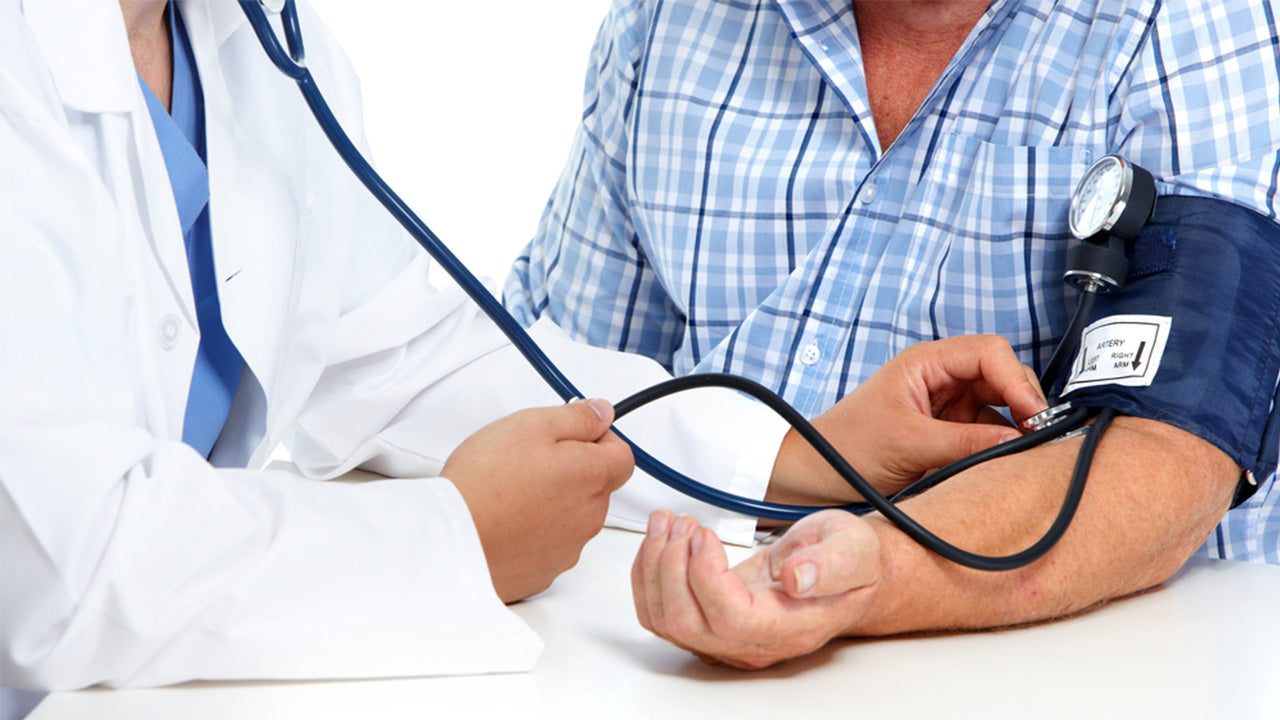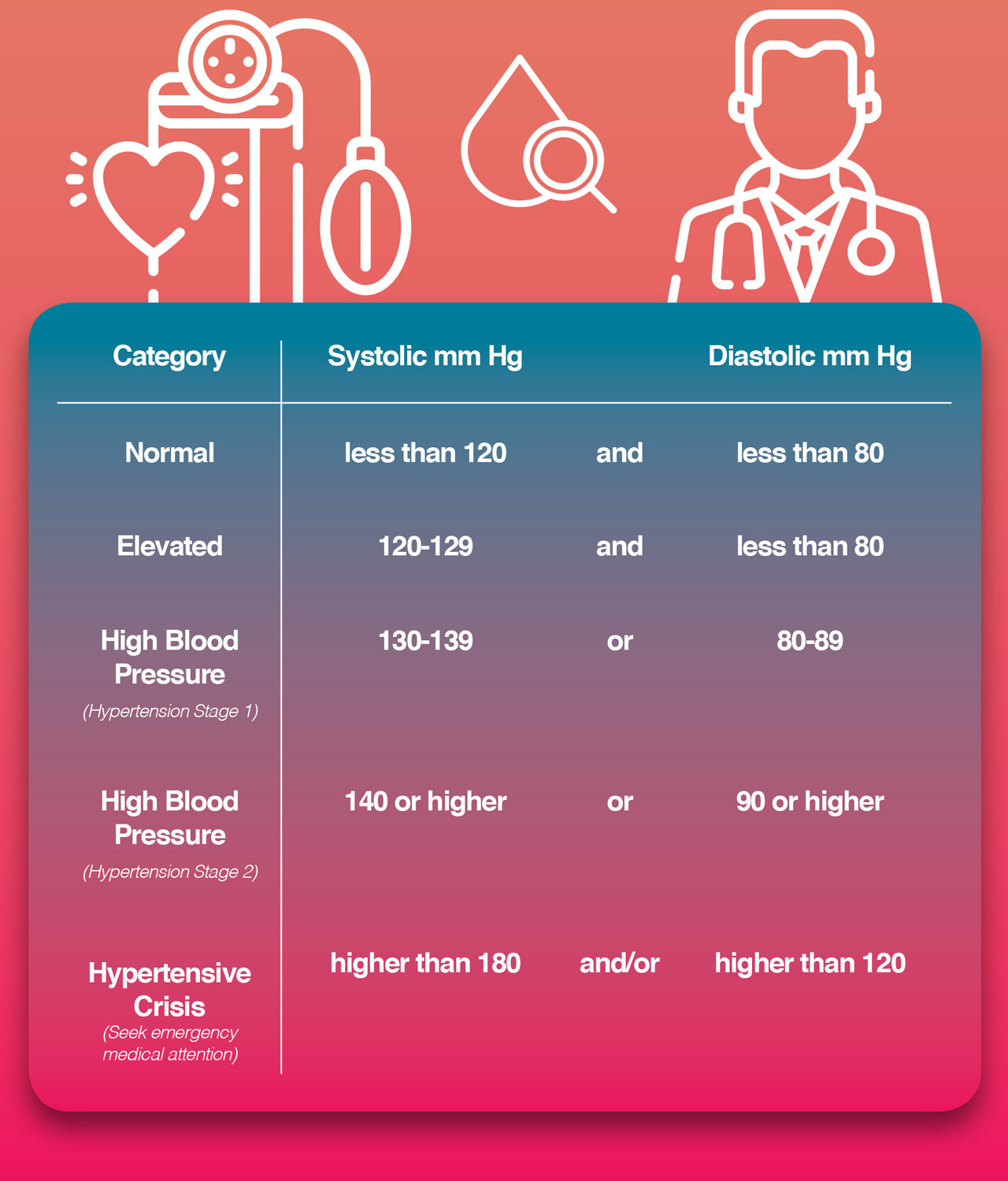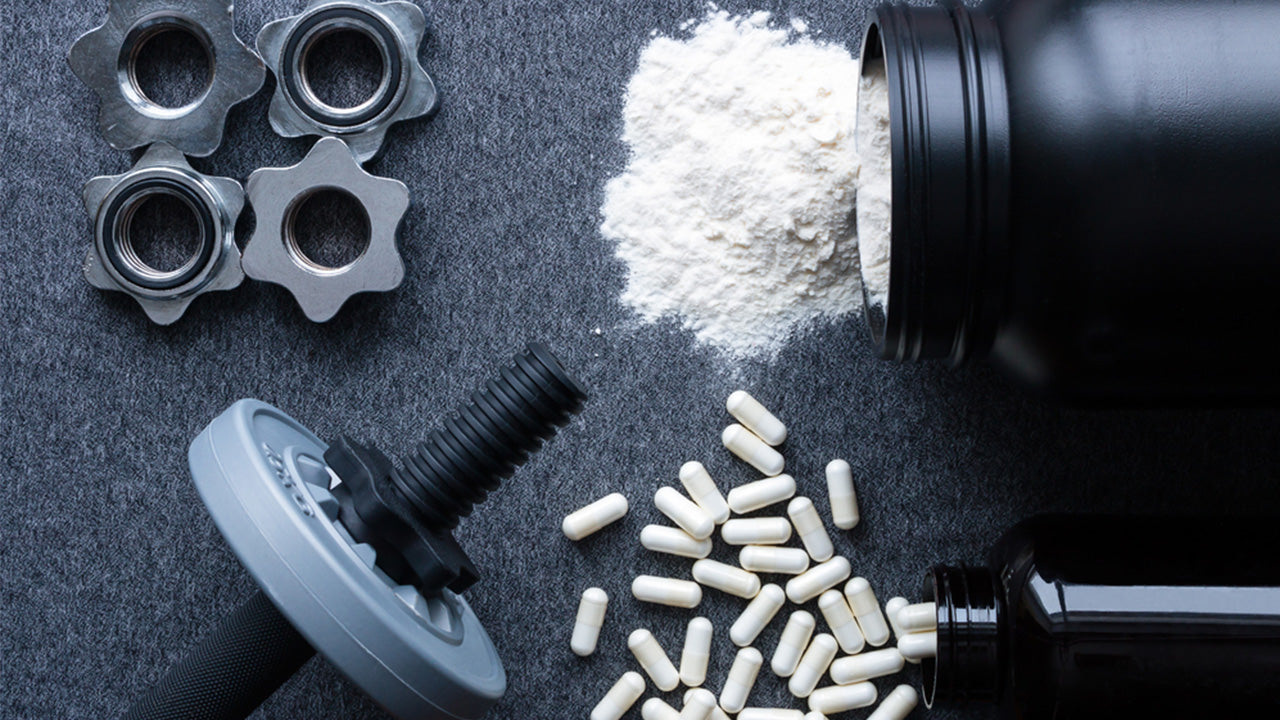The 16 Best Foods That Lower Blood Pressure
 By: by Amino Science
By: by Amino Science

According to the Centers for Disease Control and Prevention, 1 in 3 adults in the U.S. has high blood pressure. High blood pressure is often referred to as the “silent killer” because there are no specific symptoms or warning signs. Medications are available to help lower blood pressure levels, but there are also foods that lower blood pressure, without the side effects.
That is not to say that high blood pressure medications are dangerous—if you have high blood pressure, you are at a significant increase for stroke and heart disease—two of the leading causes of death for Americans according to the Centers for Disease Control and Prevention. It is essential to follow your physician’s recommendations to help bring your blood pressure numbers into a safe range. And you can always incorporate natural ways to lower blood pressure, including eating foods that lower blood pressure numbers.
The good news is that high blood pressure is considered preventable, and in some cases, reversible. High blood pressure is related to a combination of genetics, lifestyle, and nutrition. So, when you maintain a healthy weight, manage stress, eat a nutrient-dense diet, and exercise, you may be able to lower your blood pressure or prevent high blood pressure in the future.
Understanding the Numbers
The American Heart Association now defines normal blood pressure as less than 120 systolic and less than 80 diastolic. Both high blood pressure and low blood pressure lead to adverse and life-threatening health outcomes. For optimum blood circulation, we should all be aiming for the sweet spot of 120/80, or less.

But, what do these numbers really mean?
The top number, the systolic pressure, is the force that the heart produces when it pumps blood into the body. The bottom number, the diastolic, is the pressure in your blood vessels when the heart is at rest. The force is produced as the left ventricle of the heart contracts, pushing the blood throughout all arteries in the body.
While both numbers are significant, according to Harvard Medical School’s Harvard Men’s Health Watch, the higher the systolic pressure number is, the greater the risk of heart disease and stroke. If you want to keep track of your blood pressure on a day-to-day basis, there are affordable blood pressure monitors you can use at home.
Tips for Home Blood Pressure Monitoring
Here are tips from Harvard Medical School to help you get the most accurate reading from a blood pressure monitor at home:
- Don’t drink caffeine or smoke for 30 minutes before the test.
- Sit straight up, both feet flat on the floor, and rest for five minutes before you test.
- Support your arm, so your elbow is about heart level.
- The inflatable cuff should be placed on bare skin.
- Don’t talk while the blood pressure monitor is measuring.
- Take a blood pressure reading twice. Wait 30 seconds to a minute between readings. Many of the new at-home blood pressure monitors will do one reading, pause, and do another. If the readings vary by more than 5 points in either the systolic or the diastolic numbers, do a third test.
- Measure the same arm each time. According to a clinical research study, there are arm-to-arm differences in systolic pressure of 5 points +/-.
What Causes High Blood Pressure?
The medical community defines two separate types of high blood pressure—primary (essential) hypertension and secondary hypertension. The majority of adults with high blood pressure fall into the primary category. This type develops slowly, over many years, or even decades, and is often related to diet, exercise, and overall wellness.
Secondary hypertension, on the other hand, is caused by an underlying health condition, and high blood pressure occurs suddenly. It can also produce higher blood pressure results, including a hypertensive crisis. Secondary hypertension can be caused by:
- Sleep apnea
- Adrenal gland tumors
- Thyroid problems: hypothyroidism and hyperthyroidism
- Kidney problems
- Congenital blood vessel defects
- Certain over-the-counter medications and prescription drugs including birth control pills, decongestants, cold and flu treatments, corticosteroids, and more.
5 Lifestyle Causes and Risk Factors of High Blood Pressure
As mentioned above, there are a number of underlying health conditions that can cause secondary hypertension. Your lifestyle choices may also increase your risk of developing primary hypertension in the future.
1. Smoking and Tobacco Use
If you smoke or use chewing tobacco, quit as soon as possible. Smoking is one of the leading risk factors of high blood pressure, as the chemicals you inhale/ingest damage the lining of arteries. Narrowing arteries increase your overall risk for heart disease.
2. Being Overweight or Obese
Excess weight puts a strain on your artery walls due to the volume of blood being pumped through your body. Eating a heart-healthy diet rich in leafy greens, lean proteins, wild-caught fish, and fruits can help you lose excess weight.
3. Being Inactive or Sedentary
If you’ve heard “sitting is the new smoking,” make note that this is, at least metaphorically, correct. When you are not physically active and fit, you can have a higher heart rate, and the faster your heart beats, the harder your heart must work.
4. Unmanaged Stress
Life today has become unsettled at best. We are over-scheduled and under-relaxed. Our bodies and our minds need a break to reset our hormones, allowing us to process stress better. Chronic stress is linked to many serious health conditions, including:
- Anxiety
- Brain fog and cognitive impairment
- Depression
- Digestive problems
- Headaches and migraines
- Heart disease
- Insomnia and other sleep disorders
- Memory problems
- Weight gain
5. Eating Too Much Salt
Too much sodium in your diet causes high blood pressure. Many physicians recommend a high blood pressure diet that limits the amount of sodium each day to 2,300 milligrams. The main culprits of sodium in your diet? Processed foods, deli meats and cheeses, fast food, and condiments—especially soy sauce.
High Blood Pressure Symptoms
In the event of a hypertensive crisis, which is defined as a reading of 180/120 or more, you may experience high blood pressure with:
- An intense headache
- A nosebleed
- A general feeling of malaise
- Blood in the urine
- Blood spots in the eyes
- Chest pain
- Changes in vision
- Confusion
- Difficulty breathing
- Dizziness or lightheadedness
- Facial flushing
- Fatigue
- Irregular heartbeat
If you experience any of these symptoms with a high blood pressure reading, call 911 immediately.
Conventional Treatments for High Blood Pressure
If you have high blood pressure that is not manageable with lifestyle and dietary changes, your doctor may prescribe certain medications. Each medication listed below has its benefits and potential side effects, and not all of these drugs are right for every person. Treating high blood pressure is a delicate balance, and it is wise to listen to your physician’s and your cardiologist’s recommendations.
- ACE inhibitors (Angiotensin-converting enzyme inhibitors): This classification of high blood pressure medications includes enalapril (Vasotec), lisinopril (Prinivil and Zestril), and ramipril (Altace). These medications relax blood vessels and prevent the hormone angiotensin from forming. This hormone, left unchecked, narrows blood vessels.
- ARBs (Angiotensin II receptor blockers): Similar in nature to ACE inhibitors, the ARBs relax blood vessels by blocking angiotensin. Medications include losartan (Cozaar), valsartan (Diovan), and several others.
- Beta blockers: This classification of medication is prescribed often under the names of atenolol (Tenormin), metoprolol (Lopressor and Toprol-XL), and nadolol (Corgard). These drugs work by blocking the hormone epinephrine (adrenaline), resulting in a lower heart rate and less force (pressure) being produced.
- Calcium channel blockers: These medications are prescribed under the names of amlodipine (Norvasc), diltiazem (Cardizem, Tiazad, and others), and nifedipine (Adalat CC, Afeditab CR, and Procardia). This type of drug prevents calcium from entering blood vessel muscle cells and the heart so that cells can relax.
- Diuretics: When you are first diagnosed with high blood pressure, your physician may recommend starting with a prescription for a diuretic. This drug reduces blood pressure by removing excess water (and sodium) from your body.
- Renin inhibitors: Our kidneys produce an enzyme called renin. This enzyme is the building block that can start a chain reaction of chemical functions that increase blood pressure. The prescription medication aliskiren (Tekturna) slows down the production of this enzyme and may help to lower blood pressure.
16 Foods That Lower Blood Pressure
When you are first diagnosed with high blood pressure, chances are your doctor is going to suggest following a high blood pressure diet. There are many diets that have been created by cardiologists around the world, and the majority of them focus on restricting salt, adding potassium, and eating plenty of fresh fruits, vegetables, whole grains, and protein.
In addition, clinical research shows that there are a ton of foods that lower blood pressure. Here are the top 16 we love.
1. Bananas
Bananas are an excellent source of potassium for a high blood pressure diet, and according to the American Heart Association, potassium can help control high blood pressure. The recommended daily intake for potassium is 4,700 milligrams, and one banana will get you 10% of the way there.
Other potassium rich-foods include avocados, apricots, halibut, and molasses. Keeping an online food journal that tracks specific nutrients can be incredibly helpful in making sure you get enough nutrients known for lowering blood pressure levels.
2. Beet Juice
Beets are low in calories and packed with nutrients. They are considered a good source of manganese, folate, potassium, and vitamin C.
In a review of human and animal studies published in the journal Nutrients, researchers state that beetroot is a powerful dietary source of vitamins, minerals, and antioxidants. They also point to beets as protection against cardiovascular disease, certain types of cancer, and high blood pressure levels.
3. Blueberries
Blueberries are a summertime favorite. Throw some blueberries into a smoothie, top off some yogurt, or eat them fresh for an antioxidant-rich snack. Blueberries are packed with an antioxidant called anthocyanin, known for giving certain berries, fruits, and vegetables their vibrant hues. This antioxidant, or flavonoid, is linked in a long-term clinical trial to preventing high blood pressure.
Researchers followed over 150,000 people for 14 years and found that study participants who ate the highest levels of anthocyanin lowered their risk for high blood pressure by 12%.
4. Celery
We don’t often think of celery as having significant health benefits, but for those with high blood pressure, celery is nutritionally impressive. In a wide-scale survey of individuals across the globe, participants’ blood pressure readings were measured in four separate clinic visits. Dietary considerations were also surveyed, and those who consumed raw vegetables, including tomatoes, peas, and celery, had significantly lower blood pressure.
5. Red Grapes (and Red Wine, in Moderation!)
Red grapes are delicious and packed with vitamins, minerals, and resveratrol. This polyphenolic compound is associated with lowering cholesterol and inflammation. But, a recent study suggests that taking resveratrol supplements can block some benefits, including a reduction in blood pressure. Study participants were taking 250 milligrams to 900 milligrams of resveratrol daily in a supplement. One glass of wine contains a minute fraction of that. In this case, less is more.
In a meta-analysis of randomized controlled trials, the results of which were published in the journal Clinical Nutrition, researchers state that resveratrol significantly lowers systolic blood pressure but not diastolic blood pressure readings. As mentioned earlier, the medical community believes that systolic blood pressure is more directly related to long-term health concerns. If you have high blood pressure, including resveratrol foods in your diet may help improve your blood pressure.
6. Clams
Clams, a seaside favorite, are an excellent food to add to your high blood pressure diet. Clams are packed with potassium, with 20 small clams meeting over 25% of the DV. Clams are best fresh, but clams packed in water are readily available and can be used with success for baked clam and corn cakes, or for a delicious fall clam chowder recipe.
7. Coriander
The seeds of the cilantro plant produce the pungent and healthy spice coriander. Coriander has been used for generations to treat upset stomachs, toothaches, joint pain, and certain infections. And, in a study published in the Journal of Ethnopharmacology, coriander has been shown to have diuretic activities and blood-pressure-lowering capabilities. These are two interrelated and powerful reactions for those struggling to reduce their blood pressure scores.
Coriander seeds are central to Indian cuisine, but they can be added to virtually any rice or potato recipe to add a punch of flavor. If you are feeling adventurous, try carrot ginger soup with coriander that is vegan-friendly and delicious.
8. Dairy
Cow’s milk dairy and goat’s milk dairy are both excellent sources of calcium. In a systematic review and meta-analysis published in the Journal of Human Hypertension, researchers found that low-fat dairy foods are associated with a lower incidence of hypertension. It is important to note that only low-fat dairy has this notable effect according to the study.
9. Dark Chocolate
Dark chocolate is an excellent source of polyphenol compounds that have outstanding health benefits. According to researchers from The Alfred Centre at Monash University in Australia, daily consumption of dark chocolate can reduce cardiovascular events. Researchers also note that dark chocolate has a positive impact on cholesterol levels and blood pressure scores.
10. Flaxseed
Flaxseeds are used for a variety of health conditions including constipation, high cholesterol, and coronary artery disease. Researchers have found daily consumption of flaxseeds is one of the most potent dietary interventions for high blood pressure. In a double-blind, placebo-controlled, randomized trial, study participants who were given flaxseed experienced an average 10-point reduction in systolic blood pressure and 7-point reduction in diastolic blood pressure.
11. Hibiscus Tea
Hibiscus is a gorgeous tropical flower that is dried and used for teas and culinary purposes. It is loaded with antioxidants, including anthocyanin. It has a natural tart, almost sour flavor, and a bright red hue. Drinking a cup or two a day of hibiscus tea has been shown to lower blood pressure in multiple studies.
Hibiscus tea comes with some warnings. It should not be consumed by those who are on blood pressure medications or diabetes medications, as the tea can interfere with metabolism.
12. Mangoes
Mangoes are tropical fruits that are chock-full of nutrients. Research has long shown that mangoes can help with digestion, boost the immune system, and promote brain health. And a recent study by researchers from the University of California, Davis revealed that eating 2 cups of mangoes a day for two weeks has a beneficial effect on systolic blood pressure.
13. Wild-caught Salmon
The Cleveland Heartlab, part of the world-renowned Cleveland Clinic, states that omega-3 fatty acids are an excellent natural way to lower blood pressure. Coldwater fatty fish such as mackerel and salmon are rich in omega-3s, and the American Heart Association recommends eating fatty fish at least twice a week as part of a heart-healthy diet.
14. Pistachios
The pistachio is a central part of the Mediterranean diet because of its protein and healthy fat content. And now, research shows that eating pistachios can lower both systolic and diastolic blood pressure. The study, published in the American Journal of Clinical Nutrition, looked at a variety of tree nuts, peanuts, and soy nuts. Research revealed that pistachios have the strongest effect on blood pressure.
15. Pomegranate Juice
Like several of the foods on this list, pomegranate juice is rich in vitamins, flavonoids, and anthocyanin. In a small clinical study, researchers discovered that drinking 150 millimeters a day of pomegranate juice following a 12-hour fast is a promising treatment for hypertension.
16. Purple Sweet Potatoes
Purple sweet potatoes are available in late summer and into fall in most parts of the country. They are rich in nutrients and anthocyanin. Researchers from Okayama University in Japan have found that purple sweet potatoes have an antihypertensive effect in animal studies. Purple sweet potatoes can be prepared in the same manner as orange-fleshed sweet potatoes and yams.

8 Complementary Therapies to Control High Blood Pressure
In addition to altering your diet to include a variety of healthy foods, try these natural ways to lower blood pressure.
1. Lose Weight
Blood pressure increases as weight increases. And as you get heavier, sleep apnea can disturb your sleep and raise your blood pressure even more. According to the Mayo Clinic, blood pressure is reduced by 1 millimeter of mercury for every 2.2 pounds you lose.
2. Exercise Regularly
Exercising 150 minutes a week can lower your systolic and diastolic blood pressure 5 to 8 points. However, if you stop exercising, your blood pressure can rise. To maintain a healthy exercise routine, mix up your workouts to include walking, weight training, stretching, yoga, and activities you can do with friends, like playing tennis.
3. Reduce Sodium Intake
If you love salt, reducing the amount of sodium you eat can be a challenge. Initially, foods may taste flat and uninspiring. Add freshness with herbs, add tang with citrus fruits, and add pungency with garlic and onions.
When cooking pasta or rice, replace the salt with slices of an orange. As the dish cooks, the essential oils from the orange will impart a lovely flavor, and you’ll (hopefully) miss the salt less. It will take time for your taste buds to adjust, so be patient and experiment with the flavors you love.
4. Limit Alcohol
Enjoy alcohol in moderation. This is generally defined as one drink for women and two drinks for men each day. Reducing alcohol intake can lower your systolic blood pressure 4 points. And, if you do want to drink alcohol, remember that red wine has been shown to reduce blood pressure. When consumed in moderation, red wine can lower blood pressure by 4 mm HG.
5. Quit Smoking and Other Tobacco Products
Nicotine and tobacco are just unhealthy—there is no way around it. Quit smoking to reduce your risk of heart disease, lower your blood pressure, and improve your immune system. In the hours and days after you quit, your body starts to recover—in just 24 hours your risk for a heart attack is already decreasing, and in just one year, your risk of coronary heart disease has lowered by 50%.
6. Limit Caffeine
If you have high blood pressure, it is important to limit caffeine. A single cup of coffee or tea can raise your blood pressure by 10 points. Remember, caffeine hides in chocolate, tea, matcha, commercial energy drinks, and some supplements. Read labels carefully.
7. Manage Stress
Chronic stress can cause significant health problems, including increasing blood pressure. Managing stress can be tricky, especially in today’s world. Find the combination of natural stress relievers that work for you. You may want to try:
- Acupuncture
- Aromatherapy with essential oils
- Art therapy
- Deep breathing
- Engage with friends
- Get some fresh air
- Journal
- Massage
- Meditation and mindfulness
- Music therapy
- Practice gratitude
- Yoga
8. Supplement with Amino Acids
The three primary markers of metabolic disease are elevated triglycerides and LDL cholesterol, reduced insulin sensitivity, and high blood pressure. Pharmaceuticals designed to decrease triglycerides come with side effects as severe as liver damage. Supplementation with essential amino acids (EAAs) offers a safer and natural nutritional strategy, as evidenced by a leucine-enriched EAA supplement with phytosterols that substantially reduce risk factors for metabolic syndrome and heart disease when taken 3 times a day for just 4 weeks.
Lower blood pressure with Life, a leucine-enriched EAA supplement designed to strengthen heart and muscle health as we age.

Up to 25% off Amino
Shop NowTAGS: food
Join the Community
Comments (0)
Most Craveable Recipes




 833-264-6620
833-264-6620




















